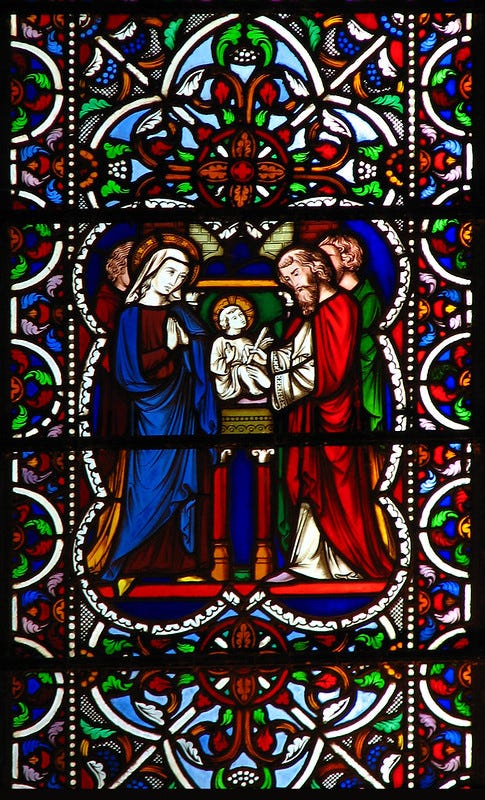
January 1 is best known today as New Years Day, the first day of the year. But according to the traditional church calendar, it is both the eighth day of Christmas (yes, it’s still Christmas! You didn’t take your tree down yet, did you?) and also a red-letter feast day, based on this verse:
And at the end of eight days, when he was circumcised, he was called Jesus, the name given by the angel before he was conceived in the womb.1
Originating around the sixth century, January 1 became known as the Feast of the Circumcision, because in Jewish tradition, a male child is circumcised on the eighth day, and January 1 is the eighth day of Christmas. As Luke records above, Jesus was included in this tradition.
But that verse also says that he was officially given the name Jesus on the same day, as the angels had instructed both Mary and Joseph. Because of that, the Feast of the Circumcision also became a celebration of the Holy Name of Jesus.
Some Christians, though, have been uncomfortable with the subject of circumcision, so we see some traditions, especially in recent times that only refer to the Holy Name. For example, since 1979 the Episcopal Church has officially called it the Feast of the Holy Name of our Lord Jesus Christ.2 Others, such as the Roman Catholic church, still call it the Feast of the Circumcision.3 The Anglican Church in North America, though, calls it the Feast of the Circumcision & Holy Name of Our Lord Jesus Christ.4 It’s a mouthful, but I think it is fitting, at least as the official name. I’ll explain why.
why the circumcision?
Including Jesus’ circumcision reminds us that Jesus was born as a Jew (a fact that a vocal few are still struggling to disprove). He was born into the people of God and under the Mosaic Covenant. He came to fulfill it, but first he became a part of it. It also would have likely been the first time that Jesus shed his blood, the blood that would one day wash us white as snow.5
The subject may make some people uncomfortable, but that’s not a good reason to abandon tradition. We should remember the circumcision on this feast day, but I do agree that the most important element is the Holy Name.
why the Holy Name?
The name Jesus is the English version of the Greek translation of the name Yehoshuah, or Joshua, which means “the Lord is salvation.” Jesus was not given a family name that represented his lineage, but rather a heavenly name that represented his purpose for coming into the world: he would be the salvation for all mankind. When the angel told Joseph that the child his betrothed was carrying was of the Holy Spirit, he told him the reason for the name he was to give the child: “you shall call his name Jesus, for he will save his people from their sins.”6
Paul has the following to say about the name of Jesus:
Therefore God has highly exalted him and bestowed on him the name that is above every name, so that at the name of Jesus every knee should bow, in heaven and on earth and under the earth, and every tongue confess that Jesus Christ is Lord, to the glory of God the Father.7
Jesus is the only one worthy of the name above every other name, and the first day of the year, when everyone is looking forward to a new year and setting goals, seems like the perfect time to glorify his name!
"The Holy Name of Our Lord Jesus Christ,” An Episcopal Dictionary of the Church, https://www.episcopalchurch.org/glossary/holy-name-of-our-lord-jesus-christ-the/.
"Feast of the Circumcision,” Catholic Answers, https://www.catholic.com/encyclopedia/feast-of-the-circumcision.
Peter Johnston, “The Circumcision and Holy Name of Jesus: A Rookie Anglican Guide,” Anglican Compass, January 1, 2023, https://anglicancompass.com/the-circumcision-holy-name-of-jesus-a-rookie-anglican-guide/.
Matthew 1:21, ESV.
Philippians 2:9-11, ESV.




